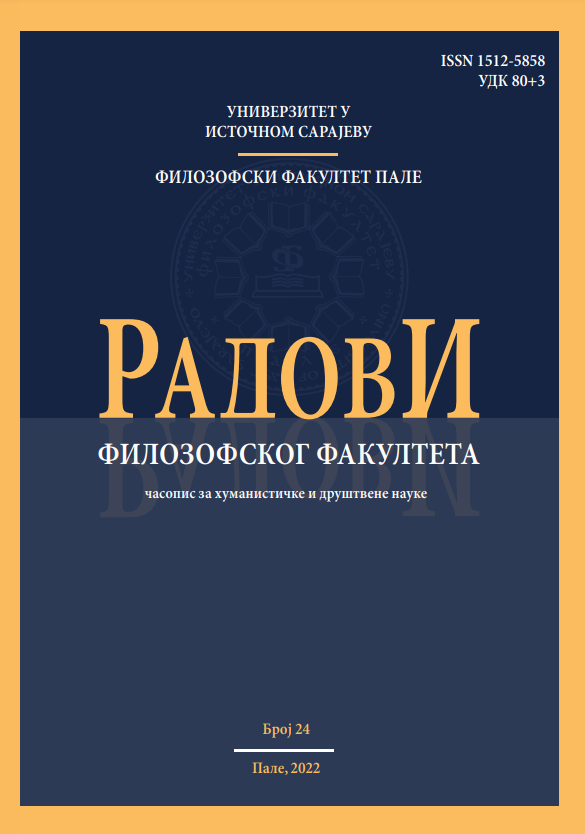ТОПОНОМАСТИКА РАНИХ ОСМАНСКИХ ДЕФТЕРА КАО ИЗВОР ЗА ПРОУЧАВАЊЕ СРЕДЊОВЈЕКОВНОГ РУДАРСТВА У ГОРЊЕМ ПОДРИЊУ
TOPONOMASTICS OF EARLY OTTOMAN DEFTERLER AS A SOURCE OF STUDY OF MEDIAEVAL MINING IN THE UPPER PODRINJE
Author(s): Bojan Đ. Krunić, Dejana VasićSubject(s): Economic history, Social history, Middle Ages, The Ottoman Empire
Published by: Универзитет у Источном Сарајеву, Филозофски факултет Пале
Keywords: The Upper Podrinje; early Ottoman census; toponomastics; mediaeval mining; Saxons;
Summary/Abstract: The result of our research shows the validity of the applied methodological postulate. Comparing the saved toponymic material in the Upper Podrinje and the recorded material in the early Ottoman registers, that could be related to the mining activity, we confirmed the connection with old mining in this area. The wealthy toponymy of this area undoubtedly indicates the intensive mining activity in the Upper Podrinje, that for the most part refers to the Roman period, and then Saxon mining in the 13th century. It seems that the ores from that area, including noble and non-ferrous metal ores (gold, lead and copper), were early depleted (probably at the end of the 13th century) so that at the time of the establishment of the Ottoman rule, or at the time of compiling the early Ottoman census, only iron mines were exploited in the hills towards Čajniče and around it. Our research also shows that the recorded mining districts in Gornji Podrinje (three of them) belong to a larger district that continued east and south-east to the Pljevlja region and Polimlje, noting that the one recorded on the right bank of the Drina was inseparable, while the remaining two (one in the Zavajt area, the other in Mrežica and Koluna) were probably isolated parts of the same. We also presented the results of our research in a cartographic presentation.
Journal: Радови Филозофског факултета (часопис за хуманистичке и друштвене науке)
- Issue Year: 2022
- Issue No: 24
- Page Range: 15-42
- Page Count: 28
- Language: Serbian

